Unveiling the Most Toxic Laundry Detergents: A Guide to Protecting Your Health and Home
Have you ever paused to consider what’s really in your laundry detergent? I remember the day I discovered that many popular brands contain chemicals harmful to both our health and the environment. It was a wake-up call that changed how I approach my family’s well-being. Recent studies reveal that these detergents can release toxic substances, affecting everything from our respiratory health to our planet’s water systems. Together, let’s explore the Environmental Working Group’s findings on these products. I’ll share practical tips on identifying harmful ingredients and choosing safer alternatives, so you can create a healthier home with confidence. Join me on this journey to uncover the truth and embrace a non-toxic lifestyle.
Identifying the Most Toxic Laundry Detergents
Understanding the toxicity levels in laundry detergents is crucial for making safer choices for your home and the environment. This section delves into the findings of the Environmental Working Group (EWG) and highlights popular brands with concerning levels of harmful chemicals.
Overview of EWG’s Findings on Laundry Detergents
The Environmental Working Group (EWG) has shed light on the hidden dangers lurking in our laundry rooms. After reviewing 269 high-efficiency (HE) laundry detergents, they found that over 60% received a D grade or worse, with a shocking 36% failing with an F grade. In a broader study of 434 general-purpose (GP) detergents, more than 65% scored a D or worse, with 37.6% receiving an F. These numbers are a wake-up call, emphasizing the need for transparency in ingredient disclosure. The EWG’s database is an invaluable tool for those of us striving to find safer options. It’s vital to understand what’s in our cleaning products and the potential health risks they pose.
Popular Brands with High Toxicity Levels
It’s alarming to discover that many popular laundry detergent brands, despite their marketing claims, are filled with harmful chemicals. Even those labeled “natural” or “organic” can be misleading. Brands like Tide, Gain, and Arm & Hammer have raised significant concerns due to their high levels of toxic substances. These detergents often contain formaldehyde, a known carcinogen, along with other environmentally hazardous ingredients. The presence of such chemicals highlights the importance of scrutinizing product labels and seeking safer alternatives. Knowing which brands contribute to toxicity empowers us to make informed choices about the products we bring into our homes.
Understanding the Dangers of Toxic Laundry Detergents
The world of laundry detergents can be a hidden minefield of harmful substances. It’s crucial to know what’s lurking in these everyday products and how they can affect your health and the environment. Let’s delve into the specific dangers associated with these toxic ingredients and explore safer alternatives.
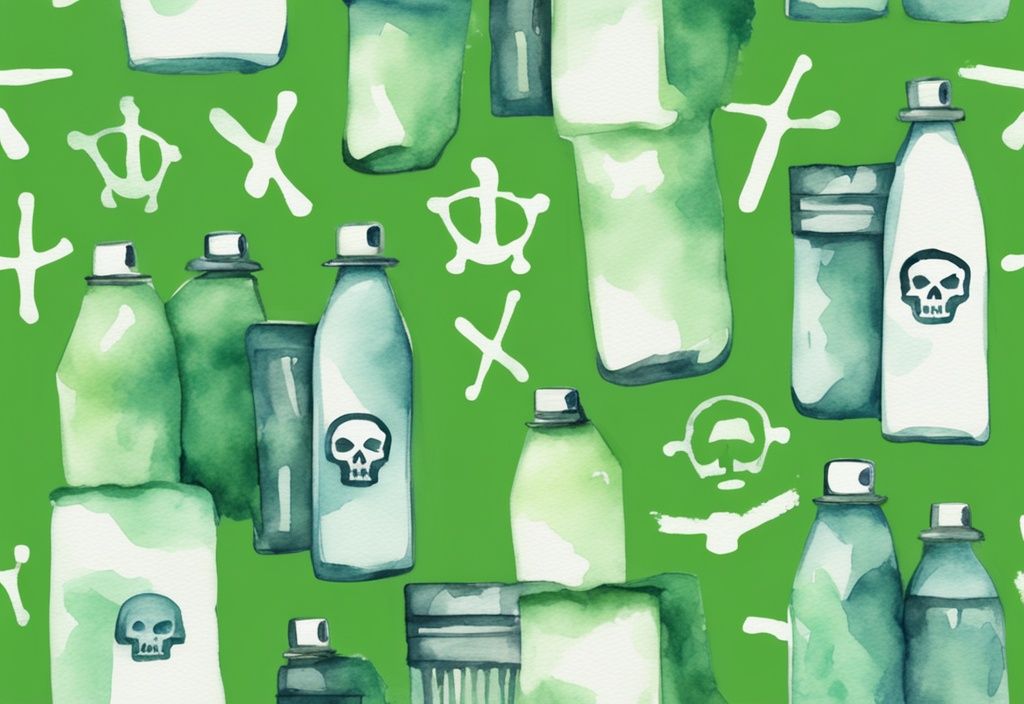
Harmful Chemicals Found in Laundry Detergents
Laundry detergents often harbor a mix of chemicals that can be quite harmful. Ingredients like phosphates, formaldehyde, chlorine bleach, ammonium sulfate, and synthetic fragrances are particularly troubling. They can be tough on fabrics and even tougher on your health. Surfactants such as petroleum distillate, naphtha, and phenol are common culprits, potentially damaging mucus membranes and lungs. Moreover, phthalates, often hidden under the term “fragrance,” and nonylphenol ethoxylates are known for disrupting hormones, which can throw your body’s balance out of sync.
Carcinogens and Their Impact on Health
The presence of carcinogens in laundry detergents is a serious concern. 1,4-dioxane, a byproduct of ethoxylated surfactants, is a known carcinogen and neurotoxin. Formaldehyde, used as a preservative, can irritate the skin, eyes, and lungs. Scented detergents make matters worse by releasing hazardous chemicals, including carcinogens, through dryer vents, posing a risk to both users and the environment.
Respiratory and Skin Irritants
Many laundry detergents contain ingredients that can irritate the respiratory system and skin. Chlorine bleach is corrosive and can lead to respiratory issues and skin burns. Ammonium sulfate is another irritant, with frequent exposure potentially leading to asthma. Additionally, optical brighteners and synthetic fragrances can trigger allergies and asthma attacks, posing a particular threat to sensitive individuals.
Endocrine Disruptors and Reproductive Health Risks
Endocrine disruptors in laundry detergents can have serious implications for reproductive health. Phthalates and nonylphenol ethoxylates are notorious for disrupting hormones, potentially interfering with hormone function and fertility. Sodium borate is another chemical with developmental, reproductive, and endocrine effects. These substances can negatively impact fetal development and hormone balance, underscoring the importance of being vigilant about the ingredients in your laundry detergents.
Choosing Safer Alternatives to Toxic Laundry Detergents
Exploring safer alternatives to toxic laundry detergents can be a transformative journey. It’s about making choices that protect both your health and the planet. Let’s delve into the essential steps to ensure your laundry routine is as safe and sustainable as possible.
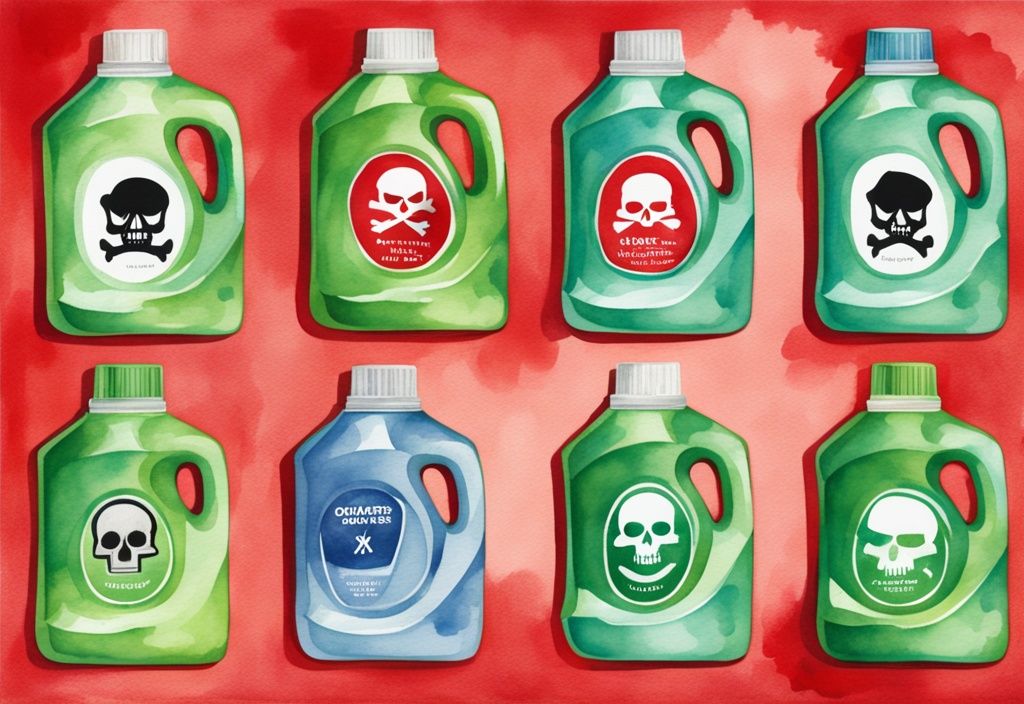
How to Read Labels and Understand Ingredients
Reading labels on laundry detergents is like unlocking a secret code to healthier living. Look for products that proudly display transparent ingredient lists and certifications such as USDA Organic or EcoCert. These badges of honor guarantee adherence to strict environmental and health standards. Be wary of detergents that toss around vague terms like “natural” or “eco-friendly” without backing them up with verifiable information. By becoming a label detective, you empower yourself to make choices that minimize exposure to harmful chemicals.
Recognizing ‘Greenwashing’ in the Detergent Industry
The detergent aisle can be a minefield of ‘greenwashing’—where products masquerade as ‘green’ or ‘natural’ while hiding harmful ingredients. To dodge these marketing traps, scrutinize the language used and verify ingredient lists and certifications. This vigilance ensures that your choices truly reflect your commitment to health and environmental values.
Recommended Non-Toxic Laundry Detergent Brands
If you’re on the hunt for safer options, brands like Seventh Generation, Ecover, and Method are your allies. They have earned their stripes by avoiding harmful ingredients and often offer biodegradable, eco-friendly products. By choosing these trusted brands, you significantly cut down on toxic chemical exposure and champion environmentally responsible practices.
Frequently Asked Questions
Exploring the world of laundry detergents can be daunting, especially when trying to avoid toxic ingredients. Here, we delve into common concerns and provide guidance on choosing safer options for you and the planet.
What are the most common toxic ingredients in laundry detergents?
In my journey towards a non-toxic lifestyle, I’ve discovered that many laundry detergents contain harmful ingredients. Some of the most common culprits include 1,4-dioxane, phosphates, synthetic fragrances, nonylphenol ethoxylate, and formaldehyde. These chemicals not only pose health risks but also raise environmental concerns. It’s like a hidden danger lurking in our laundry rooms.

How can I identify if a detergent is truly non-toxic?
I’ve found that identifying non-toxic detergents involves a bit of detective work. Start by looking for clear ingredient lists and trustworthy certifications like USDA Organic or EcoCert. Be wary of products that rely on vague marketing terms such as “natural” or “eco-friendly” without providing verifiable information. Trust me, a little research goes a long way in ensuring your detergent is genuinely safe.
Are there regulations governing the safety of laundry detergents?
Regulations can be a tricky landscape to navigate, as they vary by country. While some places have stringent rules, others leave much to be desired. However, consumer awareness and demand for safer products can push manufacturers to offer less toxic options. It’s empowering to know that our choices can influence change, even when government regulations fall short.
Conclusion
Toxic laundry detergents are more than just a household inconvenience; they’re a hidden danger that can impact your skin and respiratory health. Ingredients like formaldehyde and synthetic fragrances are often the culprits, causing irritation and breathing issues. Additionally, these detergents may contain endocrine disruptors, which can mess with hormonal balance and reproductive health.
To tackle these risks, I recommend using resources like the Environmental Working Group’s (EWG) database. This tool is a treasure trove of information, offering safety ratings for various laundry detergents and helping you pinpoint safer options. By turning to these resources, you can make informed decisions and steer clear of products loaded with harmful chemicals.
Opting for non-toxic alternatives is a proactive step toward a healthier lifestyle. Understanding ingredient labels is key in this journey. Seek out products with transparent ingredient lists and certifications like USDA Organic or EcoCert. Be wary of detergents that boast vague marketing terms like “natural” or “eco-friendly” without providing verifiable information. By doing this, you can significantly cut down your exposure to dangerous substances and foster a healthier home environment.
Hi, I’m Olivia Green, the voice behind nontoxicways.com. I’m passionate about helping you make the shift to a healthier, non-toxic lifestyle without feeling overwhelmed. I love sharing my personal journey, from small changes to big transformations, along with practical tips that make it all feel doable. My goal is to inspire and guide you toward a lifestyle that benefits both your well-being and the planet. Let’s take this journey together, one simple step at a time!
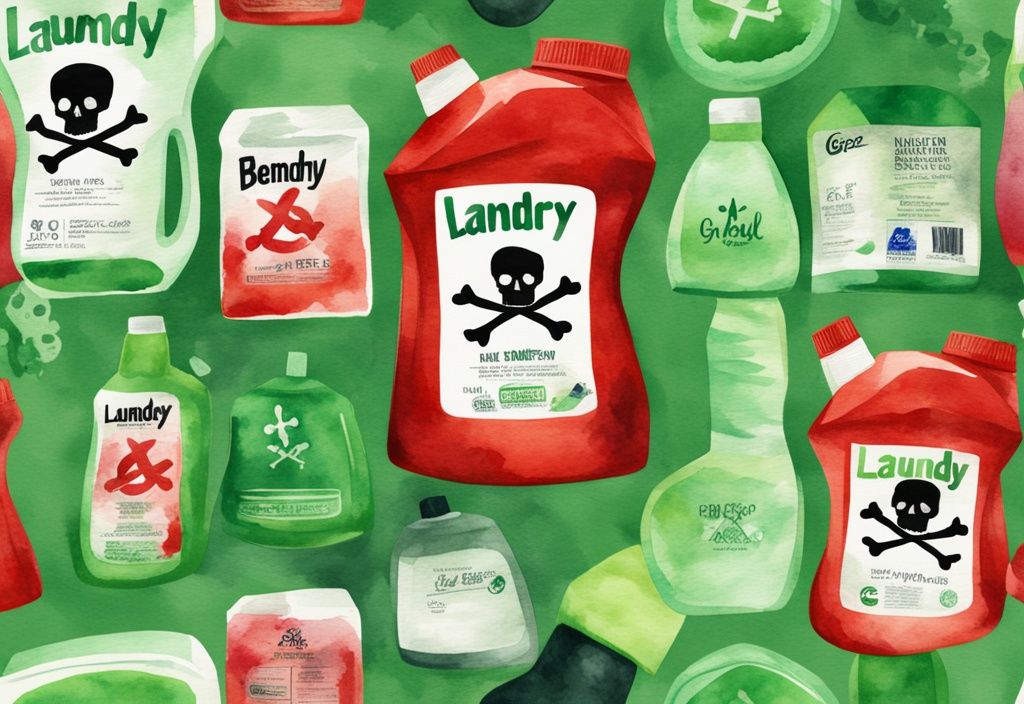
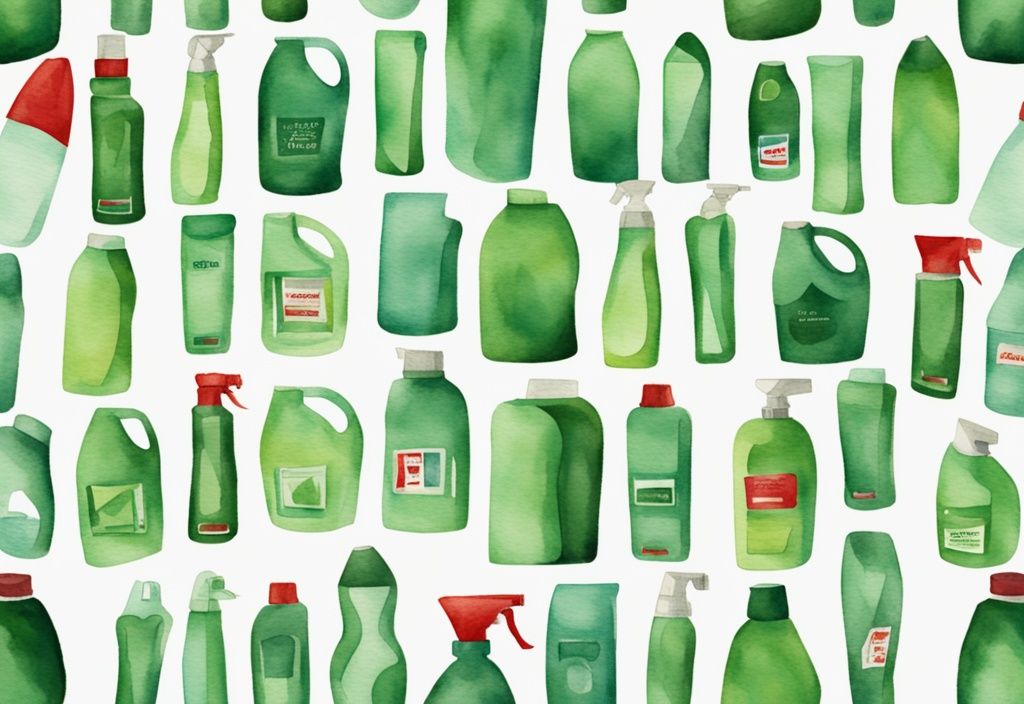
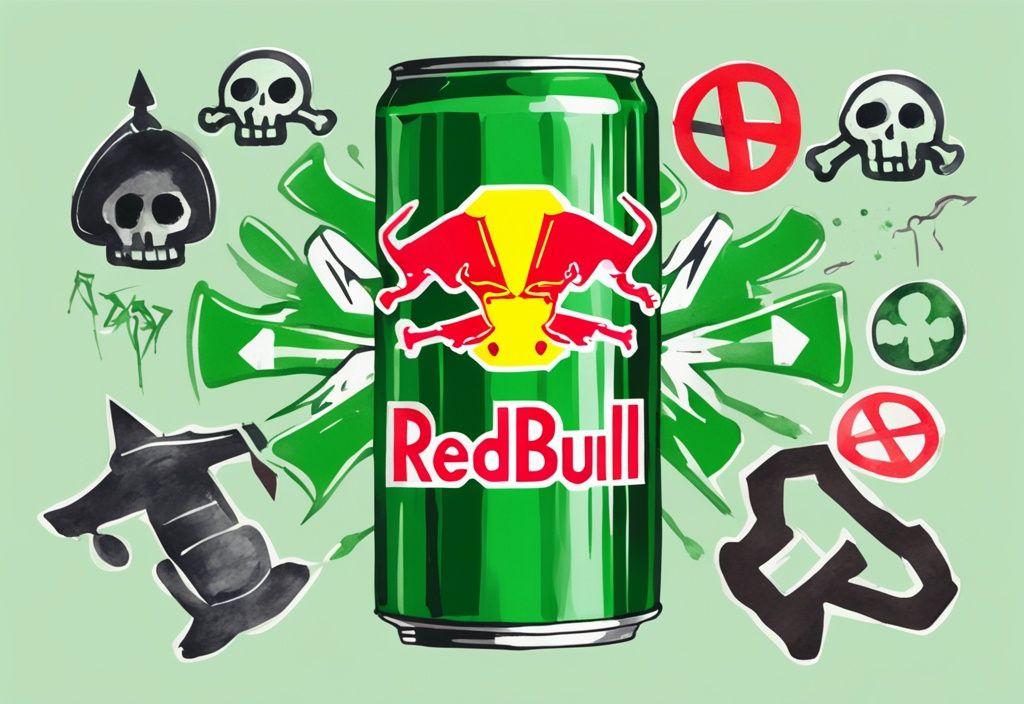

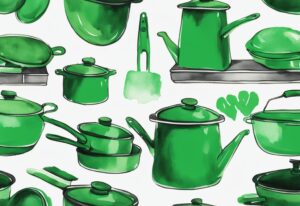



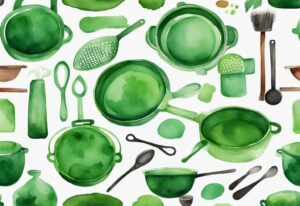
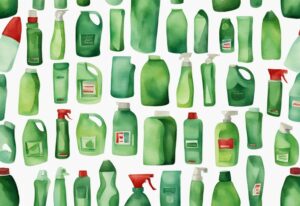
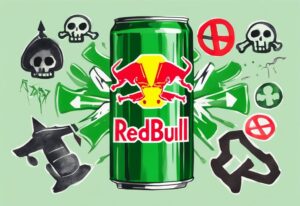

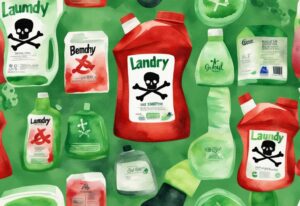
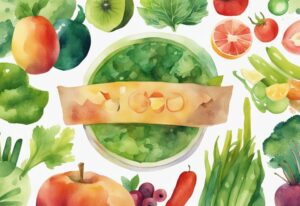
Post Comment